
This post was written by Rosanne Catron, 2012 Office Director.
The forecast for the next five days shows rain and snow likely every day. If you are planning to visit the Mono Basin, pack a raincoat and a change of socks, as we will hopefully be getting some precipitation at last. And don’t worry—storm clouds make the basin even more dramatic and beautiful than usual.
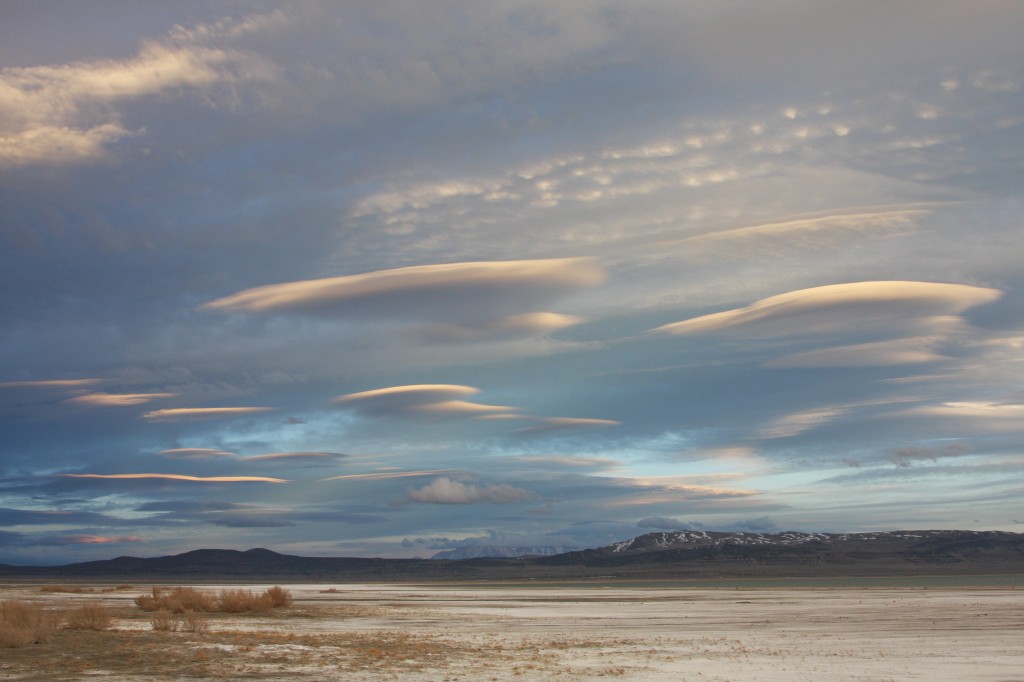
The clouds in the Mono Basin are varied and allow for a fun sport—cloud watching. If you are in the basin this week, see how many different clouds you can see and identify. The saucer shaped clouds in the picture above are called lenticular clouds. Lenticular clouds frequently occur in the skies over Mono Lake before a storm.
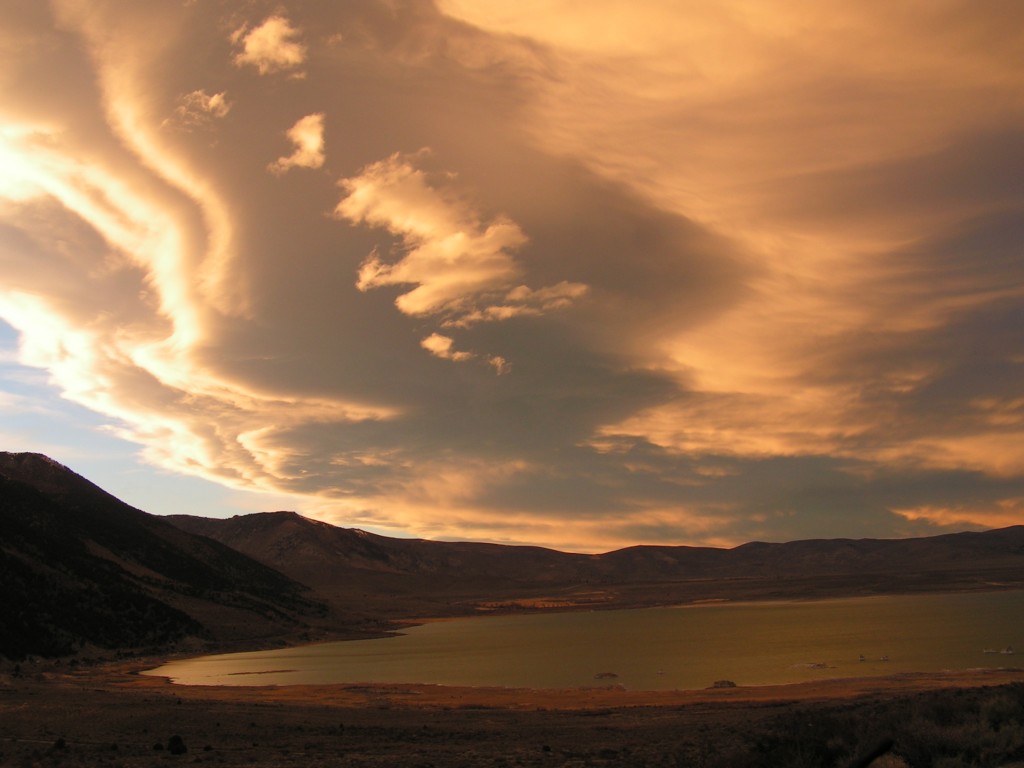
A Sierra wave is a particular kind of lenticular cloud that occurs in the Sierra, especially during the summer months. The picture above shows the undulating pattern that is typical of a Sierra wave.
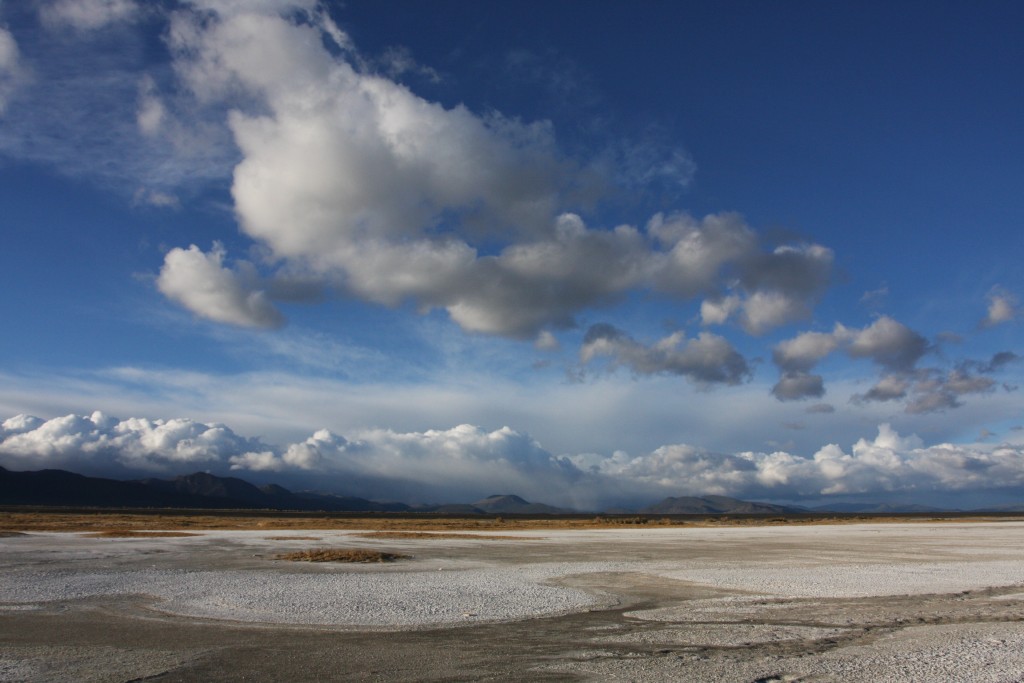
Cumulus clouds, as shown in the picture above, are usually puffy and can also indicate stormy weather ahead.
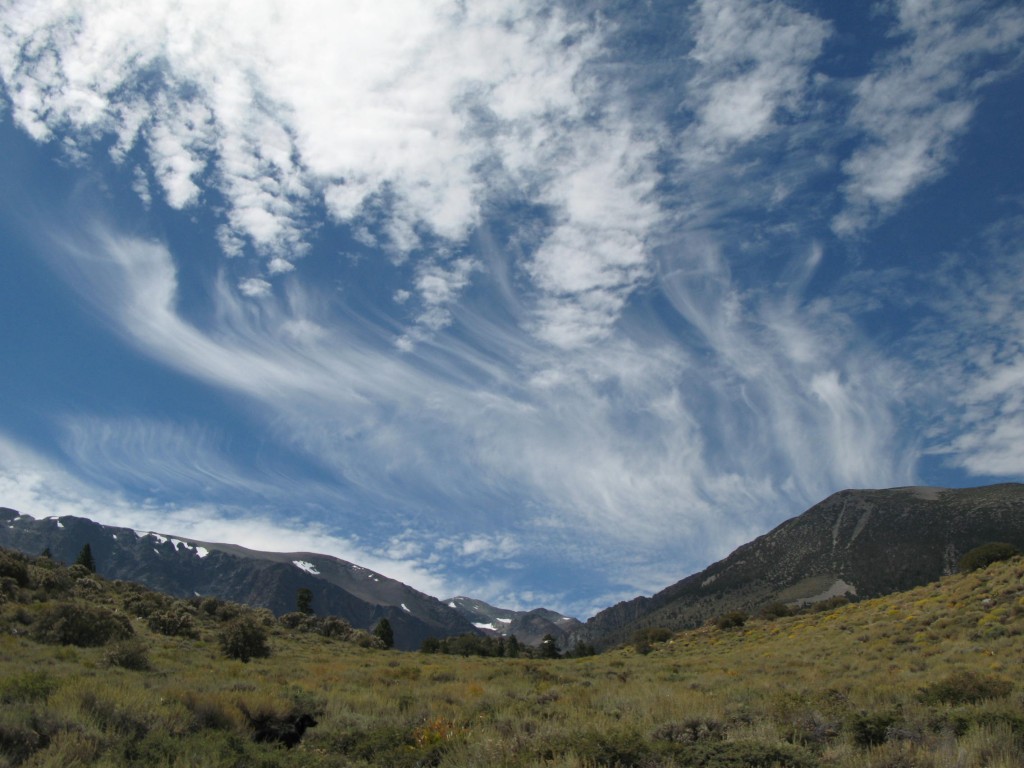
Cirrus clouds on the Parker Lake trail. Cirrus clouds are characterized by long, wispy strands of white or greyish cloud.
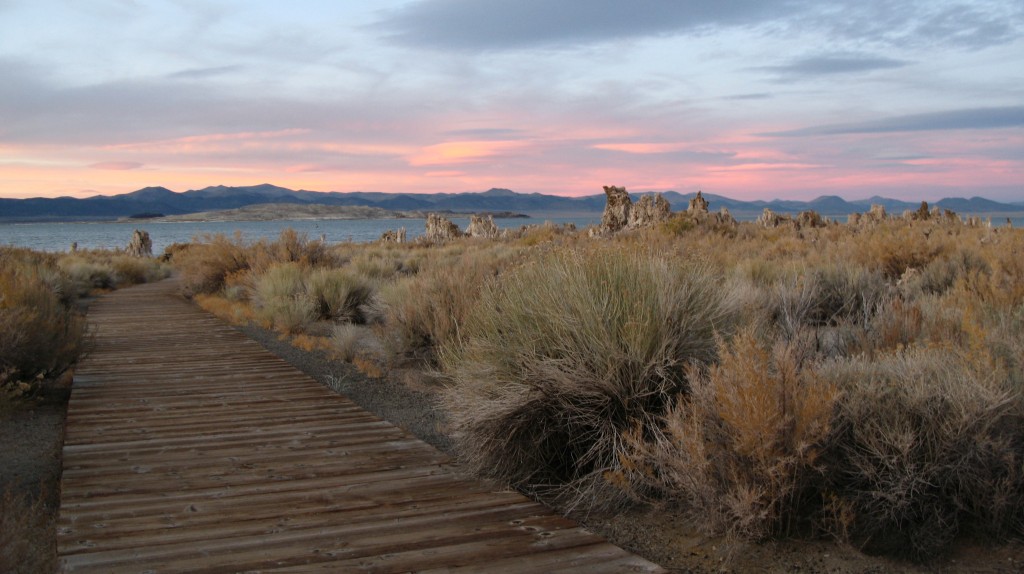
No matter the time of year, the Mono Basin offers excellent opportunities for looking skyward to learn about the different kinds of storm clouds.

What a great primer or refresher on naming clouds, all the better to un-name them again after words.
Thank you.